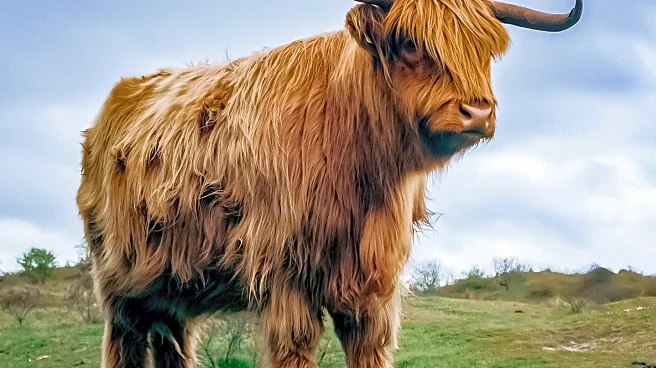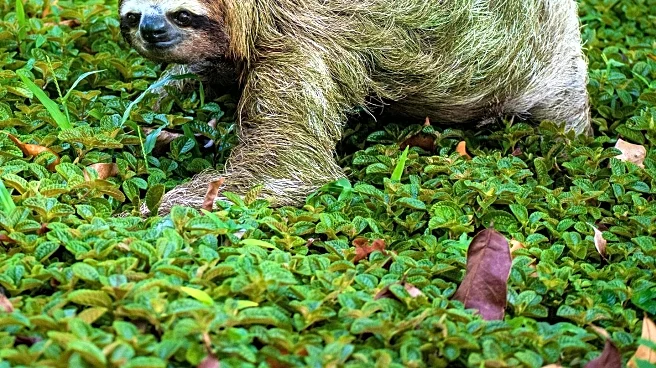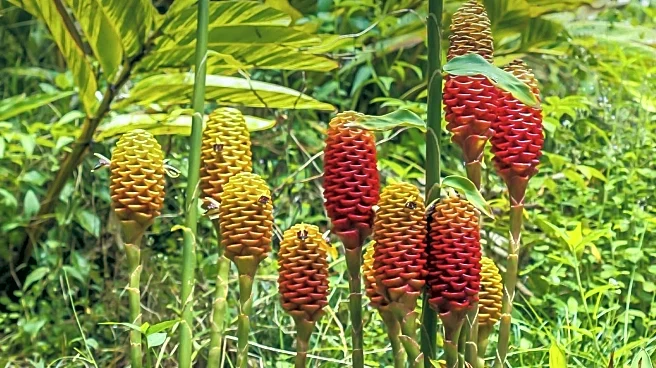What's Happening?
Elmwood Park Zoo in Norristown, Pennsylvania, has introduced a newborn two-toed sloth named Beanie’s Baby to the public. The sloth, born in August, weighs two pounds and is named after its mother, Beanie. Beanie was transferred to Elmwood Park Zoo from Rhode Island’s Roger Williams Park Zoo while pregnant, as it is considered the safest time for such a move. The zoo has been monitoring Beanie throughout her pregnancy to ensure her well-being. The gender of Beanie’s Baby is yet to be determined, as male and female sloths appear similar and require DNA testing, which will be conducted after the baby separates from its mother in about five months.
Why It's Important?
The debut of Beanie’s Baby at Elmwood Park Zoo highlights the zoo's commitment to animal care and conservation. By safely transferring Beanie during her pregnancy, the zoo demonstrates best practices in animal management, ensuring both mother and offspring are healthy. This event also serves as an educational opportunity for visitors, raising awareness about sloth species and their conservation needs. The public debut of Beanie’s Baby may increase visitor interest and engagement, potentially boosting attendance and support for the zoo’s conservation efforts.
What's Next?
As Beanie’s Baby continues to grow, Elmwood Park Zoo will conduct DNA testing to determine its gender once the baby separates from its mother. The zoo will likely continue to monitor the health and development of Beanie’s Baby, providing updates to the public. This could include educational programs or events centered around sloth conservation. The zoo may also explore partnerships or initiatives to further support sloth conservation efforts, leveraging the interest generated by Beanie’s Baby’s debut.
Beyond the Headlines
The introduction of Beanie’s Baby to the public may have broader implications for wildlife conservation and education. It underscores the importance of zoos in preserving species and educating the public about biodiversity. The event may inspire discussions on the ethical considerations of animal transfers and the role of zoos in conservation. Additionally, it highlights the need for continued research and support for sloth populations, which face threats from habitat loss and climate change.











